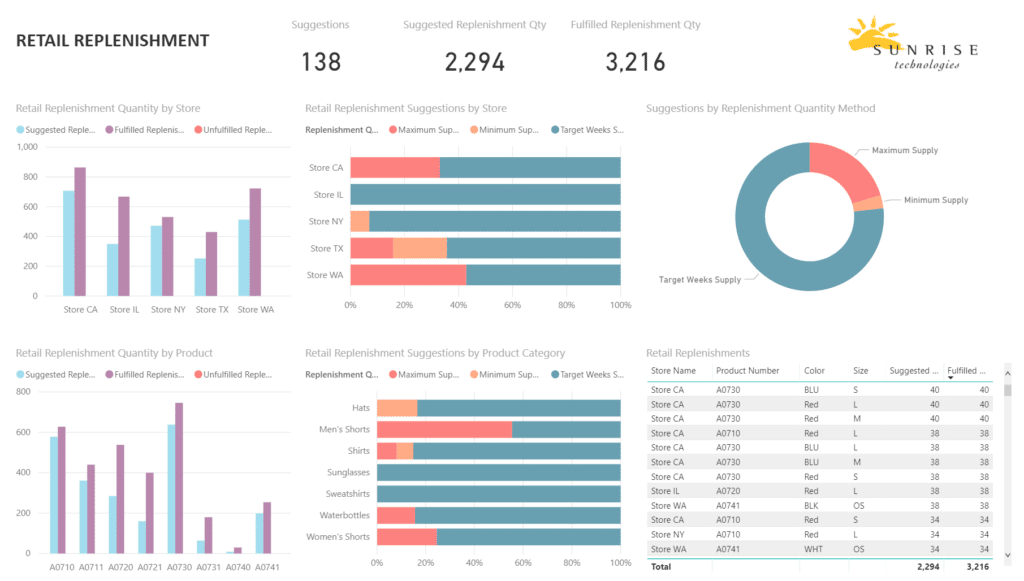From Chaos to Calm: My Journey with ERP Retail Stock Replenishment
Let me tell you a story. It’s a story about a small retail shop, a passionate owner (that’s me!), and how a brilliant piece of technology turned my biggest headache into my greatest strength. If you’re a fellow retail entrepreneur, or just someone curious about how modern businesses keep their shelves stocked, pull up a chair. This is about ERP Retail Stock Replenishment, and trust me, it’s a game-changer.
The Retail Nightmare: Before ERP
My shop, "The Cozy Nook," started as a dream. I poured my heart into curating unique gifts, handmade crafts, and artisanal goods. For the first few years, it was a whirlwind of excitement and, let’s be honest, a lot of chaos. My biggest enemy? Inventory management.
Imagine this:
- Empty Shelves: A customer walks in, eyes sparkling, looking for that specific scented candle or a popular local artist’s mug. My heart sinks. "Oh, I’m so sorry, we just sold out!" Lost sale. Disappointed customer. It happened way too often.
- Hidden Treasures (Too Hidden): On the flip side, sometimes I’d find boxes of forgotten stock in the back room – seasonal items I’d over-ordered, or products that just weren’t moving. Money tied up, gathering dust. It felt like I was literally burning cash.
- The "Gut Feeling" Ordering: My replenishment strategy? A mix of frantic last-minute orders, scribbled notes on a pad, and a whole lot of "I think we need more of these." It was exhausting, prone to human error, and completely unsustainable.
- Counting Nightmares: Every week, I’d spend hours manually counting items, trying to reconcile sales with what should be in stock. My evenings were often spent staring at spreadsheets, feeling overwhelmed and frustrated.
I was constantly battling stockouts (running out of popular items) and overstocking (having too much of unpopular items). My cash flow was suffering, my energy was drained, and the joy of running my shop was slowly being replaced by stress. I knew there had to be a better way, but I didn’t know what it was.
The Turning Point: Discovering ERP
One particularly frustrating Tuesday, after turning away three customers looking for the same item, I had an epiphany. My business couldn’t grow if I kept running it like a lemonade stand. I needed a system, a robust backbone to support my operations. That’s when a friend, who runs a successful multi-location boutique, mentioned ERP.
"ERP?" I asked, completely blank. It sounded like something only huge corporations used. She smiled. "Enterprise Resource Planning. And trust me, for retail, it’s a lifesaver. Especially for stock replenishment."
She explained it wasn’t just about big businesses anymore. Smaller, agile ERP solutions were available, designed specifically for retailers like me. My curiosity was piqued. I started researching.
What Exactly Is ERP Retail Stock Replenishment (for a beginner like me)?
Initially, the jargon was intimidating. But I quickly realized that at its core, ERP Retail Stock Replenishment is simply a smart way to ensure your shelves are never empty of what customers want, and never overflowing with what they don’t.
Think of it like this:
It’s not just a fancy spreadsheet; it’s an intelligent system that connects all the dots in your retail operation – sales, inventory, purchasing, even customer data. When it comes to stock replenishment, it does this:
- Monitors Sales Data: It constantly tracks what you’re selling, how much, and how quickly. It learns patterns – what sells well on weekends, what spikes during holidays, what’s a consistent bestseller.
- Understands Your Stock Levels: It knows exactly what you have in your store, in your backroom, and even what’s on its way from suppliers.
- Considers Lead Times: How long does it take for a new order to arrive from your supplier? The ERP knows this and factors it in.
- Calculates "Reorder Points": Based on all this data, it can automatically suggest when to reorder an item (before you run out, but not too early).
- Suggests "Optimal Quantities": It doesn’t just say "order more." It says "order 25 of these mugs, because your sales data, lead time, and desired safety stock suggest this is the perfect amount to avoid stockouts without overstocking."
Essentially, it replaces my "gut feeling" with data-driven decisions. It sounded like magic, but it was just smart technology.

